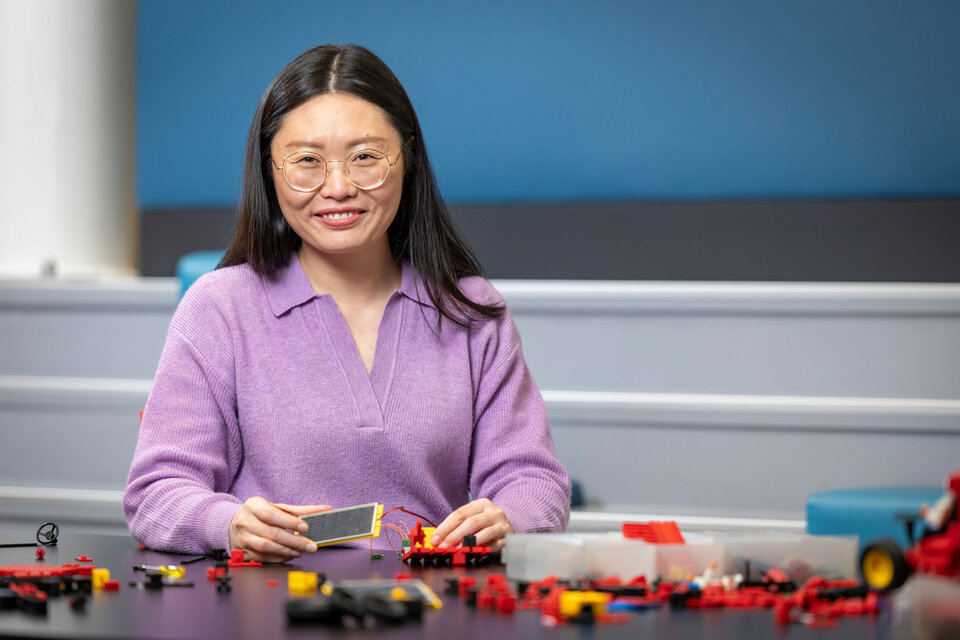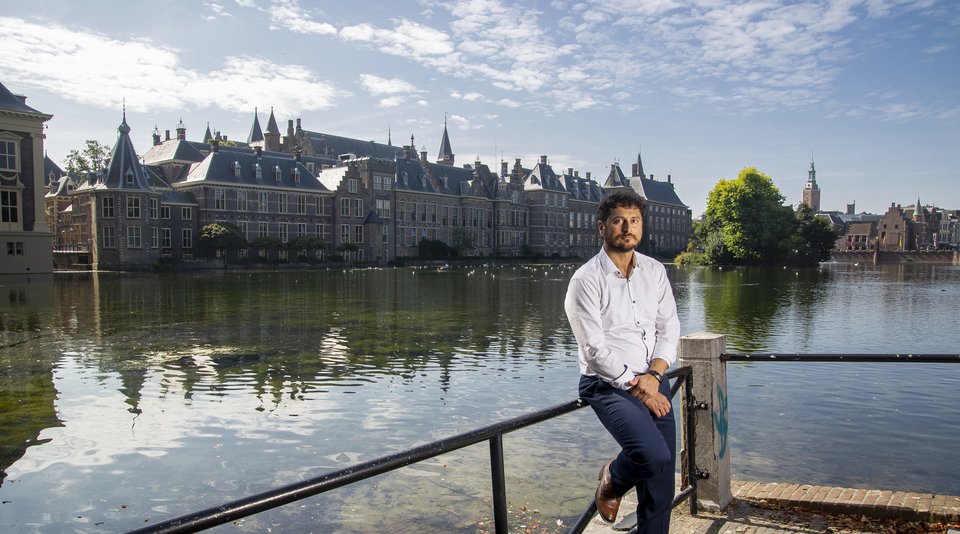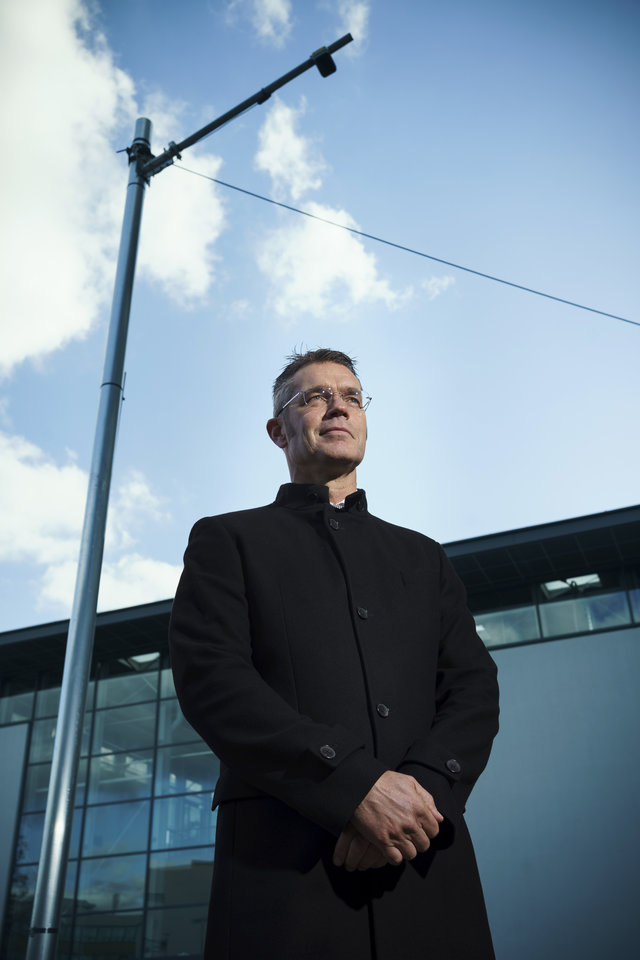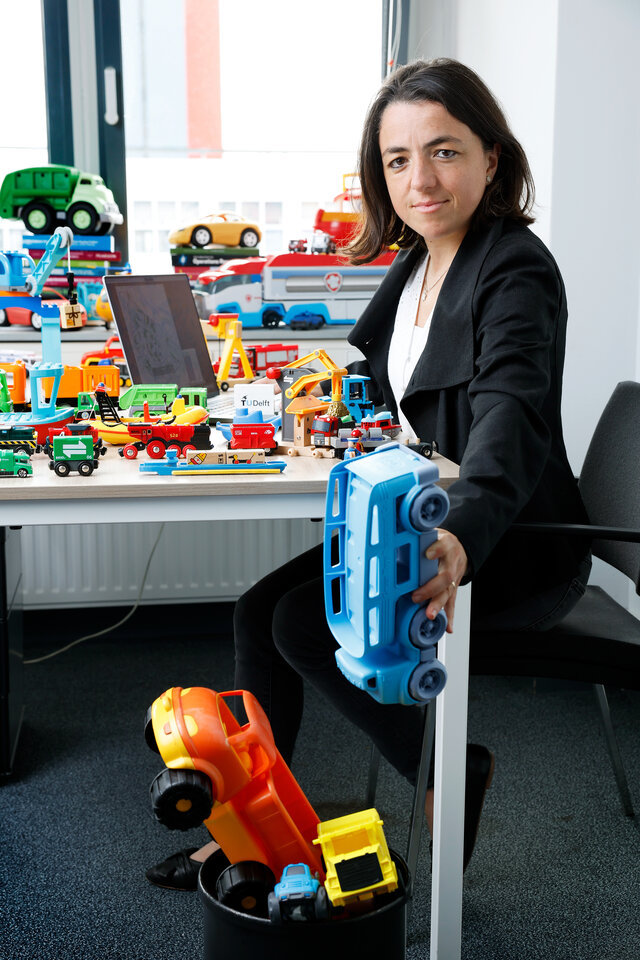Flying on hydrogen eliminates CO2 emissions but comes with challenges in flame stability, NOx emissions and reliability, especially given the strict aviation standards. Francesca De Domenico, Assistant Professor in Sustainable Aircraft Propulsion, sees this as an opportunity to radically re-think and innovate combustion systems for aviation. Her experimental research lays the groundwork for addressing these issues and advancing sustainable flight.
December 16th, 2024
Kerosene has been the main fuel for airplanes because it is energy-dense, affordable, and safe to use. But it took many decades of gradual improvements to reach today’s engine efficiency. “We don’t want to follow that path for hydrogen-powered jet engines,” says Francesca De Domenico, Assistant Professor in Sustainable Aircraft Propulsion. “Let’s get it right from the start.”
The challenge is that existing models that describe kerosene combustion do not apply to hydrogen because of its very different combustion properties. These differences, such as a much higher flame speed, require new models to be developed for hydrogen to fulfill its potential as a net-zero-emission aviation fuel. “Accurate and detailed measurements provide the ground truth. I want to verify theoretical assumptions, uncover new phenomena, and enable innovative solutions through experimental observation.”
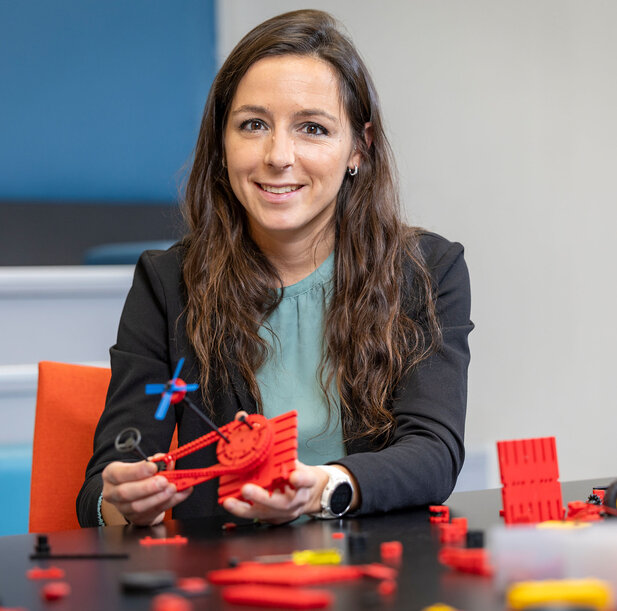
Peer into the flame
She mostly uses lasers to peer deeply into hydrogen flames as they are uniquely suited for extreme environments where traditional sensors fail. The lasers also do not disturb the flame, yielding clean and reliable experimental data. “Such data are critical for understanding hydrogen combustion dynamics and, ultimately, designing efficient jet engines.”
Francesca uses a variety of combustion chambers for her research into sustainable aircraft propulsion. These allow her to vary key combustion parameters such as injector design, pressure, air to fuel ratio and mixing conditions. “We can also integrate several lasers to measure various properties across the flame; the temperature, the concentration of reaction products, and flow speeds, to name a few.”
My mission is to disruptively tackle the way in which we power aircraft.
Francesca de Domenico
It is not only a high combustion efficiency for which she peers into the flame. Her experiments also help address two other challenges in hydrogen-powered aviation. “The higher flame speed of hydrogen makes it prone to flashback, where the flame propagates backward into the fuel injector. This may cause hazardous situations. Hydrogen combustion also comes with much higher flame temperatures. This can lead to increased NOx emissions, particularly in cases where the combustion process is not carefully designed. My research aims to mitigate these challenges through innovative design and experimental insights.”
A special place
Many places in Europe are turning to hydrogen for a cleaner future. What sets Francesca’s research apart is its dedicated focus on sustainable aircraft propulsion. “At TU Delft, we have experts looking into all design aspects of hydrogen-powered aviation – from engines to fuel systems to entire planes and their emissions. We constantly consider how hydrogen combustion impacts the end users and their specific needs.”
She also works closely with scientists who study hydrogen combustion using computer simulations. “They often see certain phenomena in their simulations and rely on experiments to confirm what they find. Real-world tests help improve and fine-tune their models to make them more accurate. At the same time, their simulations can help explain our experimental observations by showing us what is otherwise invisible. This teamwork is important for making new discoveries and improving technology.”
Fuel mixes
Francesca believes that even with better understanding of hydrogen combustion, we likely won’t see commercial planes flying on liquid hydrogen only until after 2040. She therefore also explores multifuel combustion. “Blending some hydrogen with kerosene is a practical stopgap for the coming years. The idea is to provide a solution that does not require a full redesign of the aircraft or the engine. This approach will help reduce emissions in the short term while paving the way for fully hydrogen-powered aircraft.”
Incremental steps towards reducing carbon emissions are not a solution. We need revolutionary changes.
Francesca de Domenico
Ze past haar expertise en onderzoeksopstelling ook buiten de luchtvaart toe. “We nemen deel aan een project waarbij waterstof en ammonia worden ingezet voor toepassingen op de grond, zoals energieopwekking en verwarming. We onderzoeken ook technologieën die van een complexere verbrandingskamer gebruik maken – een ontwerp dat niet geschikt zou zijn voor vliegtuigen.” Zo kan een kleine waterstofvlam, die ergens op de faculteit Luchtvaart- en Ruimtevaarttechniek brandt, wel eens een grote rol gaan spelen bij het volbrengen van de energietransitie.
Also read:
Blending some hydrogen with kerosene is a practical stopgap for the coming years.
Detailed combustion measurements provide the ground truth for hydrogen as a net-zero emission aviation fuel.




